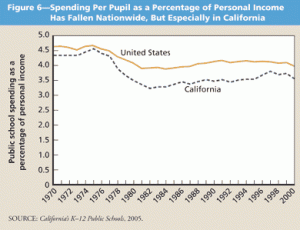California's charter school industry is booming. Even as school districts reel from punishing budget cuts and school shutdowns, new charters are sprouting in every corner of the state: just this year, a hundred schools opened for business. There are now 982 of them in California, the most in the country by far, according to the California Charter Schools Association.
More than 412,000 students, or 7 percent of California's k-12 student population, are now enrolled in charters, which is pretty significant considering that 20 years ago, charter enrollment in the state was zilch.
The basic gist
Charters are publicly funded, tuition-free k-12 schools that operate under specific performance agreements (“charters”) approved by a local school district, county office of education, or the State Board of Education. For California's charters, the former is usually the governing agency.
What makes them different from conventional public schools?
For the most part, charters operate independently from school districts and have more control over academic achievement and school management than do district-run schools. Although they get similar levels of per-student public funding and are considered a part of the public school system, California's charters have specific goals and operating procedures – laid out in their original proposals – and are exempt from many of the rules and regulations that apply to conventional schools. They also aren't required to have a board or governing body and the majority of charter teachers don't belong to a union (although they can collectively vote to join one). And unlike conventional public schools, which generally serve students who live in specific geographic areas, most charters are known as "schools of choice," meaning that anyone can attend, regardless of home address.
When did they start ... and why?
In 1992 the state legislature passed the Charter Schools Act (SB 1448), making California the second state in the nation (after Minnesota) to allow public charters. The law's stated intent was to “provide opportunities for teachers, parents, pupils, and community members to establish and maintain schools that operate independently from the existing school district structure.” The initial legislation limited the total number of charters in the state to 100, and no more than 10 per school district. Funding would “follow the student” after leaving a traditional public school. Since then, their numbers have skyrocketed. They're often started up in traditionally low-income school districts, as a smaller, locally-controlled alternative to large under-performing neighborhood schools. Los Angeles and the San Francisco Bay Area have the largest concentrations.
